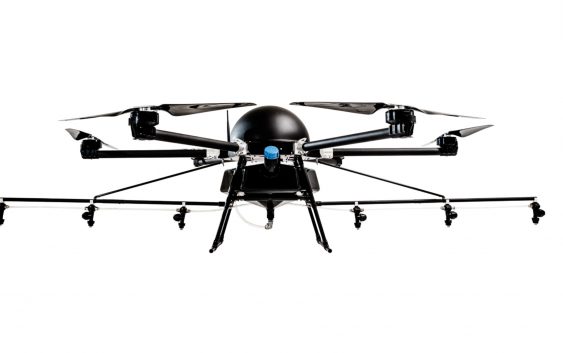You’ve likely heard a lot of talk about using drones to deliver everything from blood to seeds. But is it actually a good idea? Today we take a look at some of the pros and cons of this new industry and try and see if it’s really worth it.
The company Zipline currently airdrops critical blood and other medical supplies with over 500 packages being delivered per day, rain or shine, 24/7 at up to 75 km’s away!
Cons
While the general idea of having a drone that can fly from point A to B and deliver various goods isn’t a bad one, there are some potential issues that arise. For starters, in most cases where this technology is demonstrated it’s done so using autonomously flown drones that go well beyond anyone’s Visual Line Of Sight (VLOS).
In most countries however (including America), flying your drone outside of VLOS is illegal and while I’m sure some countries could easily change these laws, they’d only want to do so once it’s been proven that the technology is safe and dependable.
This means mature, well developed software and systems, redundant sensors as well as numerous field tests and verifications to make sure everything is up to spec. Beyond that they are also wanting ways to track all the drones just as they do with aircraft.
All of this software and technology will need to be developed and rolled out in order to support the new industry of thousands of autonomous drones constantly flying around back and forth. Which brings me to the next con… having thousands of drones constantly flying around!
With the number of packages that companies like Amazon or UPS deliver it’s not hard to imagine that if allowed to deliver via drone, they’d be operating a huge number of them. One big con of drone delivery will be the added noise and potential annoyance of all these drones flying around over our heads.
While it might not be too bothersome in a city where there is already significant noise, it could become an issue out in the suburbs given it’s a lot quieter. While DJI have already taken a small first step by developing quieter blades for the Mavic Pro Platinum, I’d imagine people might demand even quieter drones, especially during the landing / take off phases.
Pros
So what about the pros then? Well for most it seems to be highly centered on the big three:
- Lower Cost
- Lower Delivery Time
- Lower Emissions
Although the upfront costs of buying the drones, the management systems and paying for the development etc is obviously higher than just paying some guy in a van to deliver a burrito, the ongoing costs for drone delivery is far cheaper.
There’s likely to be maintenance costs but overall, the cost of delivery is essentially reduced to whatever the cost the company pays for electricity to charge the drones. As you can imagine, this is a pittance compared to paying dozens of truck drivers full time salaries and buying and servicing big expensive delivery trucks and paying for the fuel for said trucks.
While currently delivery costs can be anywhere up to $10 even for small items, drone delivery costs might see this figure drop to a dollar or two, or possibly be just included for free.
On top of that reduced costs there’s a far quicker delivery time. With drones flying direct, with no traffic or traffic lights and flying speeds of up to 50 mph. This means at full speed and with the example of Amazon’s Prime Air drones flight radius of 10 miles, it could take around 12 minutes for your package to be delivered even if you live that full 10 miles away.
In a busy urban environment or worse, the middle of a bustling city, that’s a huge advantage both for the company and the customer.
And last but not least we have lower emissions. As you’re not using huge – usually diesel burning – trucks to carry around what can often be quite small packages it greatly saves on greenhouse gas emissions.
With many companies like Amazon already pushing quickly towards using 100% renewable energy it’s also not hard to imagine them not only delivering packages via drones, but by drones run on completely renewable power too. This would also reduce their costs even further whilst at the same time being better for the environment.
So while there are a few technical things to manage – mainly how to monitor and safely operate thousands of drones simultaneously delivering drones – there are some amazing benefits possible with drone delivery. It’s no wonder so many huge companies are racing to get it to market!
Even if they do roll out a full drone delivery service though, there are still a huge number of packages that will need to be delivered the old fashioned way simply due to their size or weight. In the end it seems like a hybrid system will emerge where both trucks and drones deliver packages, at least until battery technology improves.
Author: Alex Shoolman




